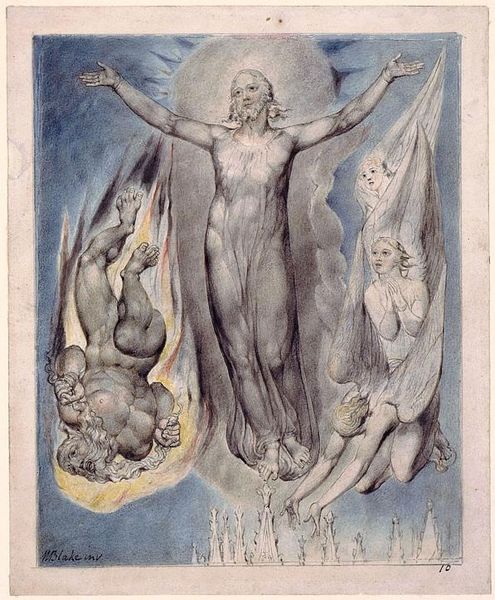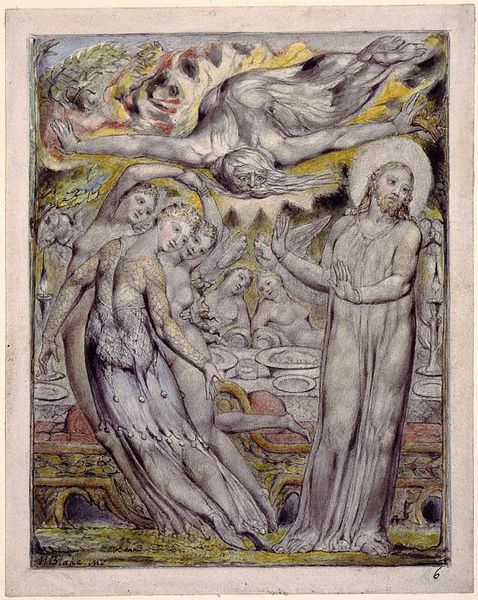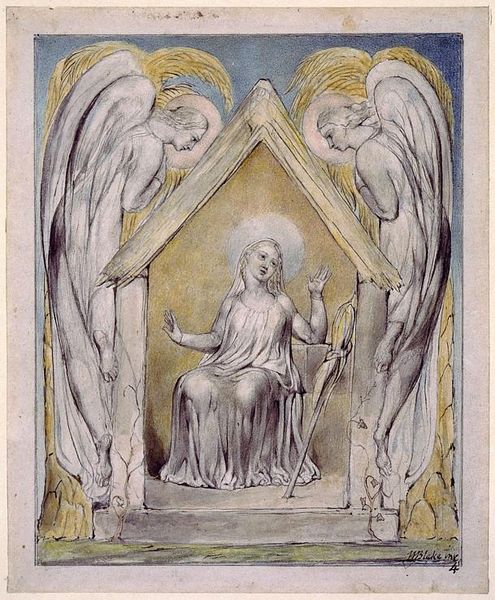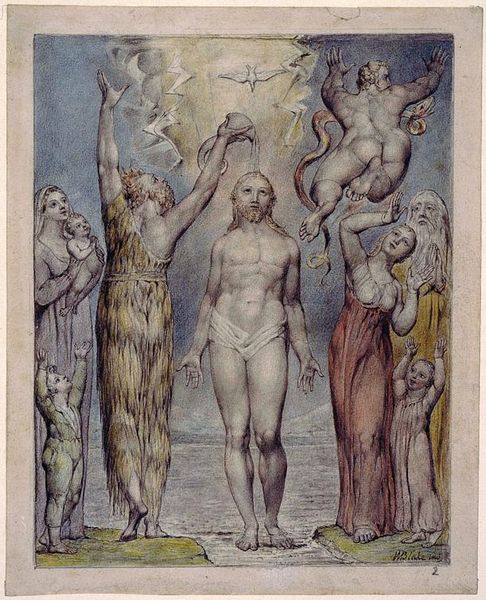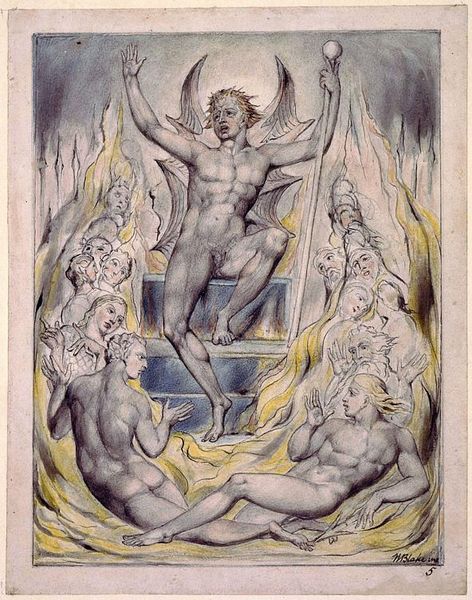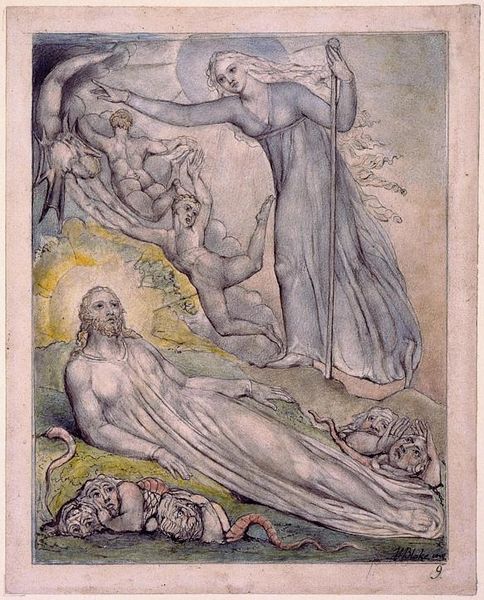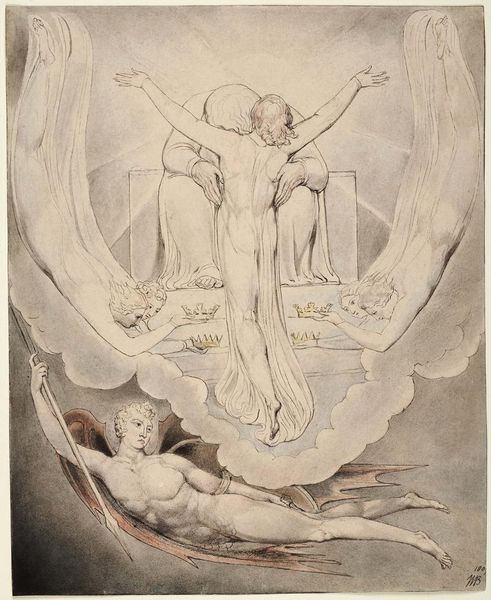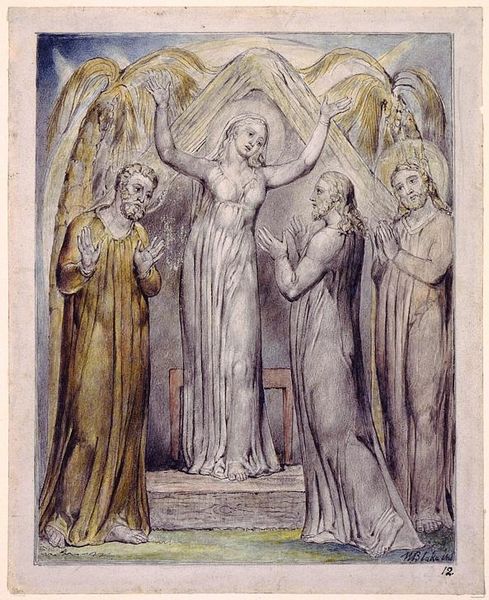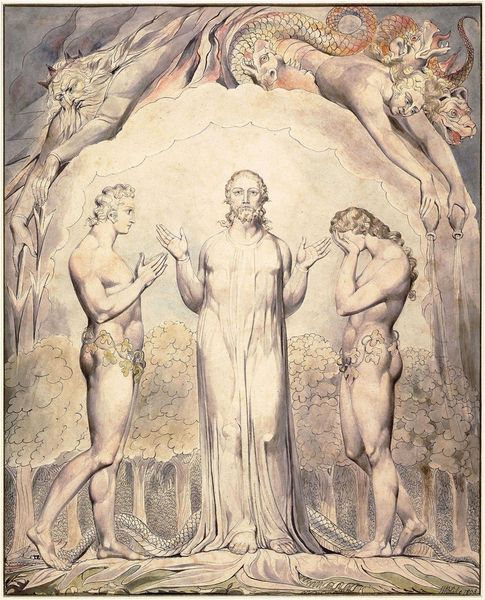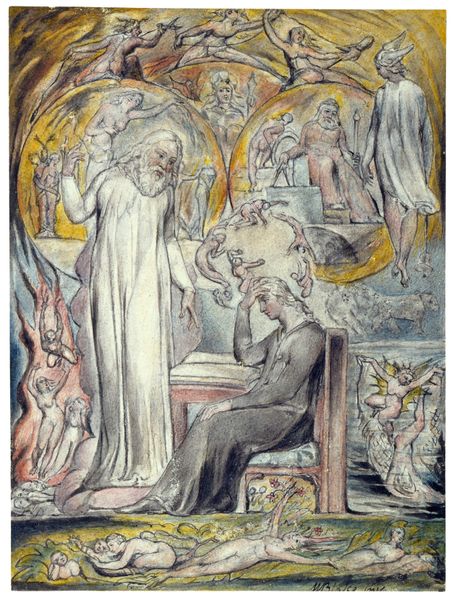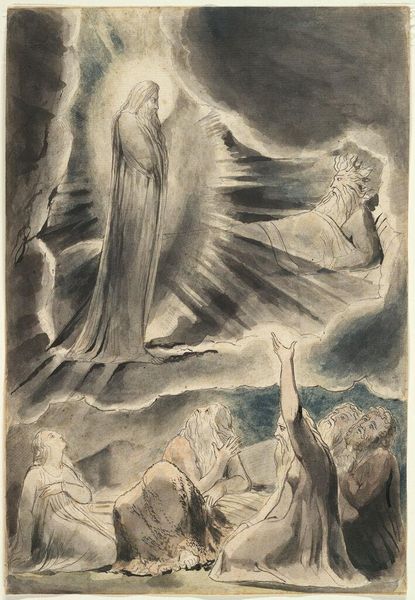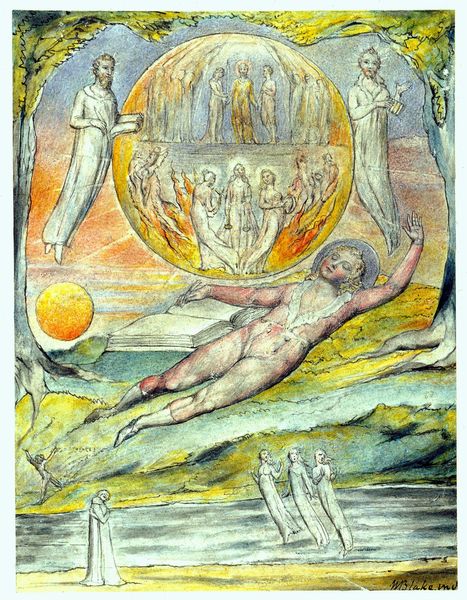
Angels Ministering to Christ 1820
0:00
0:00
williamblake
Fitzwilliam Museum (University of Cambridge), Cambridge, UK
drawing, watercolor
#
drawing
#
narrative-art
#
figuration
#
watercolor
#
romanticism
#
surrealism
#
mythology
#
portrait drawing
#
watercolor
#
angel
#
christ
Dimensions: 13.6 x 16.5 cm
Copyright: Public domain
Curator: Here we have William Blake’s "Angels Ministering to Christ," a watercolor drawing from around 1820. It's part of his biblical series. Editor: My initial reaction is one of ethereal solemnity. The composition feels almost like a vision, with those radiant figures surrounding a central Christ figure. There's a definite sense of heightened spirituality. Curator: Blake's personal mythology is all over this. The visual language he employs—those elongated figures, the dynamic, flowing drapery—they're not just aesthetic choices. They express a deeply personal, and at times, politically charged spiritual worldview. Consider the socio-political radicalism underpinning much of Blake's art and poetry: the Church was the establishment, right? So how does Blake position the meek and the divine here? Editor: Yes, the symbols feel rich. We have angels bearing the Eucharist symbols – bread and wine – emblems of sacrifice, communion. I am also intrigued by Blake's conscious use of Christian imagery intertwined with a much older iconographic system where sacrifice, divine redemption, and apotheosis are recurring themes. Curator: Absolutely. And that sense of dramatic unveiling in the watercolor—the subtle gradations, the light emanating from Christ— it amplifies the drama and emotion, drawing from Romanticism and maybe challenging orthodox religious perspectives, especially during a period defined by sharp societal stratification and oppressive governance. Editor: Precisely. It goes back to the psychology of symbols – it does not reside solely in their prescribed religious meanings but in the emotional resonance they stir in the viewer. What I perceive are the universality of love and compassion; it suggests an inclusive spiritual interpretation – perhaps something radically distinct from institutional rigidity of the time. Curator: Perhaps Blake’s subversion isn’t overtly in the visual iconography but in how his distinct Romantic visual style decenters orthodox perspectives, offering a new, potentially feminist-angled reading on ministering through his distinct stylistic lens. Editor: Interesting point. As we wrap up, what strikes me most is Blake's unique capacity to blend personal vision with shared cultural iconography into a single arresting, vivid expression of transcendent solace. Curator: Yes, Blake’s choice to depict the vulnerable side of the divine resonates in an era calling for societal change. A testament, undoubtedly, to the ever-shifting nature of theological and socio-political representation.
Comments
No comments
Be the first to comment and join the conversation on the ultimate creative platform.
